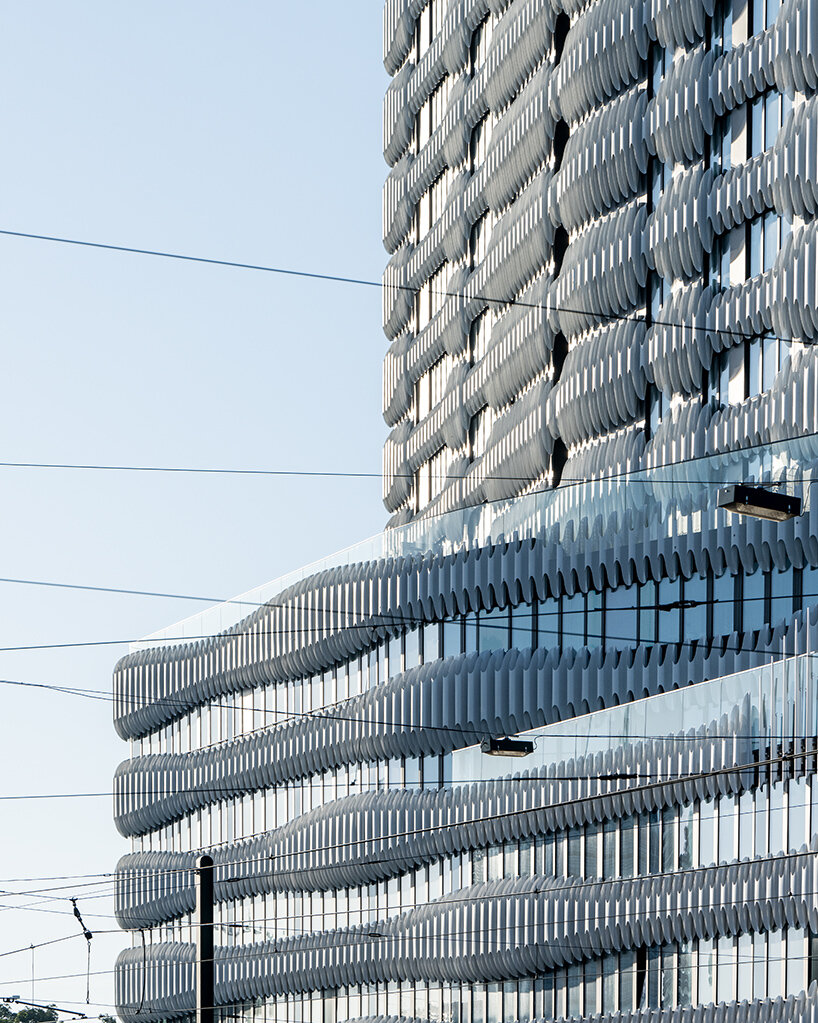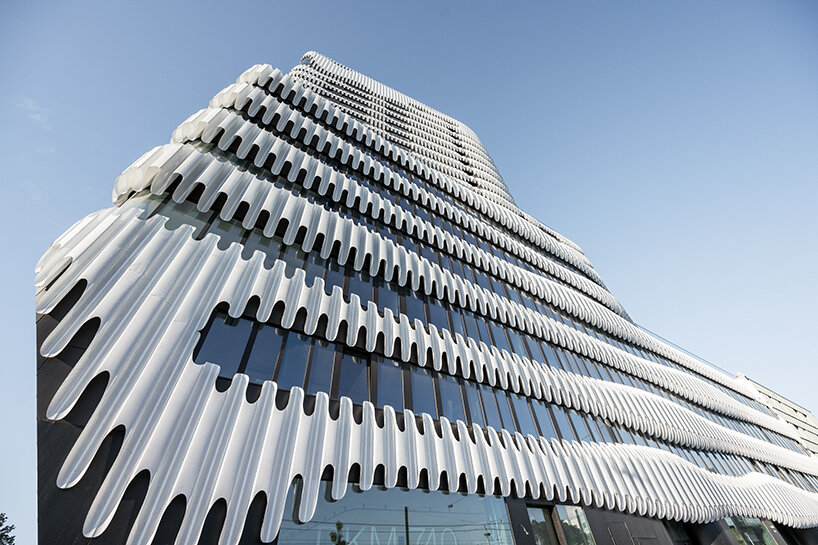j. mayer h. wraps newly completed düsseldorf tower with a ‘zipper’ facade
a hybrid high-rise in düsseldorf
J. Mayer H. Architects unveils a newly completed high rise in Germany dubbed ‘Zipper’ RKM 740 Tower. The project has been built in response to a growing increase in the urban density of the area, in Düsseldorf-Heerdt. The changes of the urban fabric have led to new types of hybrid high-rises, with this newest hosting the workspaces for various medical practices alongside residences.
‘Our project ZIPPER is part of the latest generation of these mixed-use concepts,’ the architects note, ‘the synergy effects thus achieved with comprehensive health grant the existing hospital trans-regional importance as the ‘prototype of a hospital for the future.’
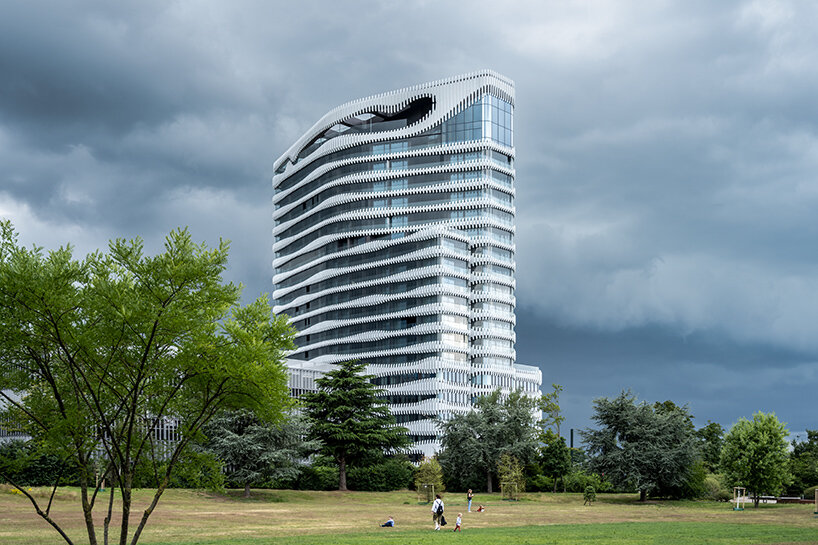
images by David Franck | @davidfranck.de, unless otherwise stated
a new landmark along the rhine
J. Mayer H. Architects sites its Zipper Tower within a larger campus along the Rhine. The sprawling site combines housing with healthcare facilities, and marks the transformation of a former park on the grounds of Dominikus-Krankenhaus hospital. This ambitious undertaking is signified by the newly completed high rise — the winner of a 2011 international design competition — which the design team describes as a ‘striking emblem of this transformation, visible from afar.’
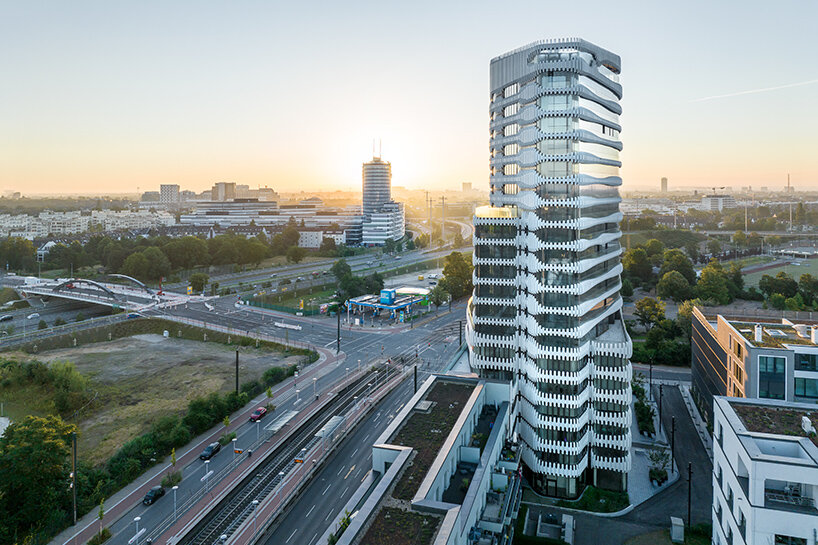
the ‘zipper’ facade by J. Mayer H.
The architecture takes shape with a unique facade of perforated metal, a curtain which serves to shade the interiors. The facade is designed together with facade consultant Ebener, and is characterized by its gentle curvatures and zipper-like patterning, this skin strategically opens and closes according to the building’s orientation.
The team explains: ‘On the east, south, and west sides of the building, the wavy shell opens generously while also offering shade and wind protection. On the north side, the façade is closed to provide sound insulation from the traffic.
‘Like a zipper, the transitions between open and closed are gradual and allow for flexible adaptation during the process of development over the years.’
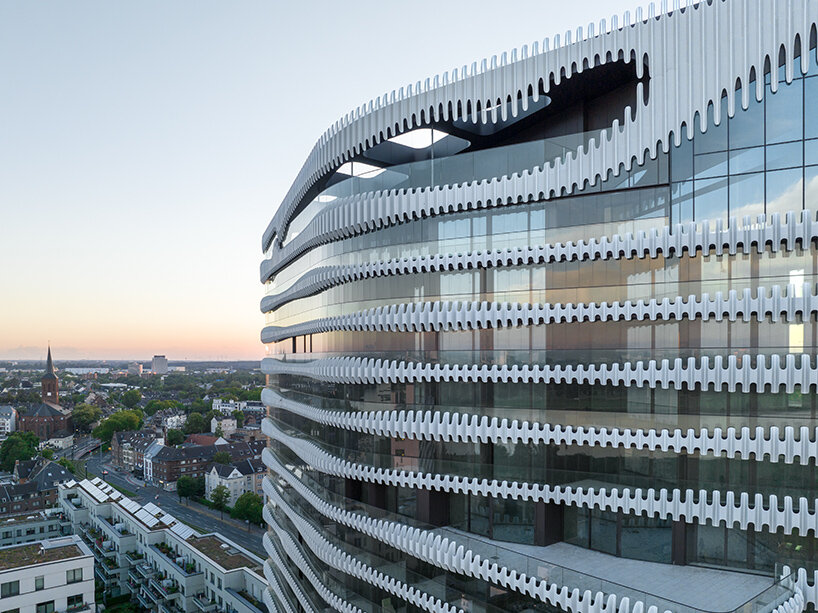
inside the tower
The architects describe the programmatic organization of the Zipper tower: ‘The combination of group practices, specialists, and therapists in the lower six floors of the building offers synergies with the existing hospital to create a medical health center with an importance that goes beyond the local region.
‘The fourteen floors above feature a vital mix of various residential forms resulting in transparent, light-flooded living spaces with generous terraces, balconies, loggias, and rooftop gardens.’
